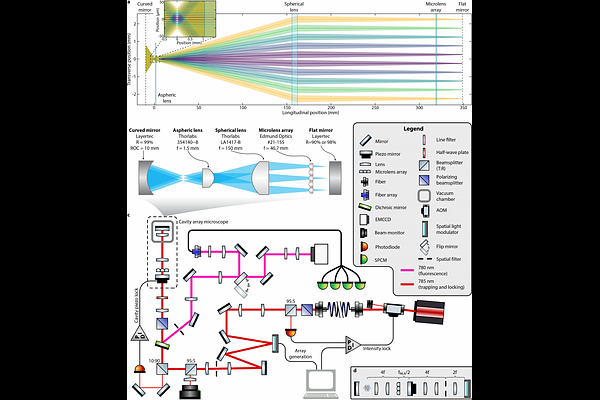A cavity array microscope for parallel single-atom interfacing

A cavity array microscope for parallel single-atom interfacing
Adam L. Shaw, Anna Soper, Danial Shadmany, Aishwarya Kumar, Lukas Palm, Da-Yeon Koh, Vassilios Kaxiras, Lavanya Taneja, Matt Jaffe, David I. Schuster, Jonathan Simon
AbstractNeutral atom arrays and optical cavity QED systems have developed in parallel as central pillars of modern experimental quantum science. While each platform has demonstrated exceptional capabilities-such as high-fidelity quantum logic in atom arrays, and strong light-matter coupling in cavities-their combination holds promise for realizing fast and non-destructive atom measurement, building large-scale quantum networks, and engineering hybrid atom-photon Hamiltonians. However, to date, experiments integrating the two platforms have been limited to interfacing the entire atom array with one global cavity mode, a configuration that constrains addressability, parallelism, and scalability. Here we introduce the cavity array microscope, an experimental platform where each individual atom is strongly coupled to its own individual cavity across a two-dimensional array of over 40 modes. Our approach requires no nanophotonic elements, and instead uses a new free-space cavity geometry with intra-cavity lenses to realize above-unity peak cooperativity with micron-scale mode waists and spacings, compatible with typical atom array length scales while keeping atoms far from dielectric surfaces. We achieve homogeneous atom-cavity coupling, and show fast, non-destructive, parallel readout on millisecond timescales, including cavity-resolved readout into a fiber array as a proof-of-principle for future networking applications. This platform is species-agnostic and scalable, and we expect key metrics to further improve in a next-generation realization anticipated to be compatible with glass-cell-based experiments. Our work unlocks, for the first time, the regime of many-cavity QED, and opens an unexplored frontier of large-scale quantum networking with atom arrays.